Building of the Day: 73-97 Empire Boulevard, an Ebbets Field Parking Garage
The site for Ebbets Field was chosen for several important reasons, one of which was the availability of public transportation.

Photo via Google Maps
Brooklyn, one building at a time.
When Ebbets Field opened in 1913, thousands of people flocked to the ballpark from all over. Since the automobile had worked its way into the hearts of Americans as securely as the love of baseball, many of those people had cars. They had to park somewhere, right?
Name: Former garage
Address: 73-97 Empire Boulevard
Cross Streets: Corner McKeever Place
Neighborhood: Crown Heights South
Year Built: Somewhere around 1913-14
Architectural Style: Brick commercial, with Gothic ornament
Architect: Unknown
Landmarked: No
Baseball Meets Automobile Row
The site for Ebbets Field was chosen for several important reasons, one of which was the availability of public transportation. This was the edge of Flatbush, on Bedford Avenue near Malbone Street (now Empire Boulevard) and Flatbush Avenue, all heavily traveled streets with trolley and rail service.
But along with the nearby public transit, Bedford was rapidly gaining a reputation as Brooklyn’s Automobile Row. Beginning as far back as 1905, there were automobile dealers opening up shops along the street, many replacing the bicycle sellers that had previously been all the rage.
There were at least 30 different auto companies at the time, so showrooms, service stations, gas stations, tire stores, garages and other car-related businesses opened all up and down on Bedford, as well as on some of the streets near Bedford.
Automobile Row was a factor in choosing this area for the ballpark, and the ballpark was a factor in the Row growing and expanding. After all, if someone came out to a game, they would already be in the neighborhood — so why not go car shopping before or after the game?
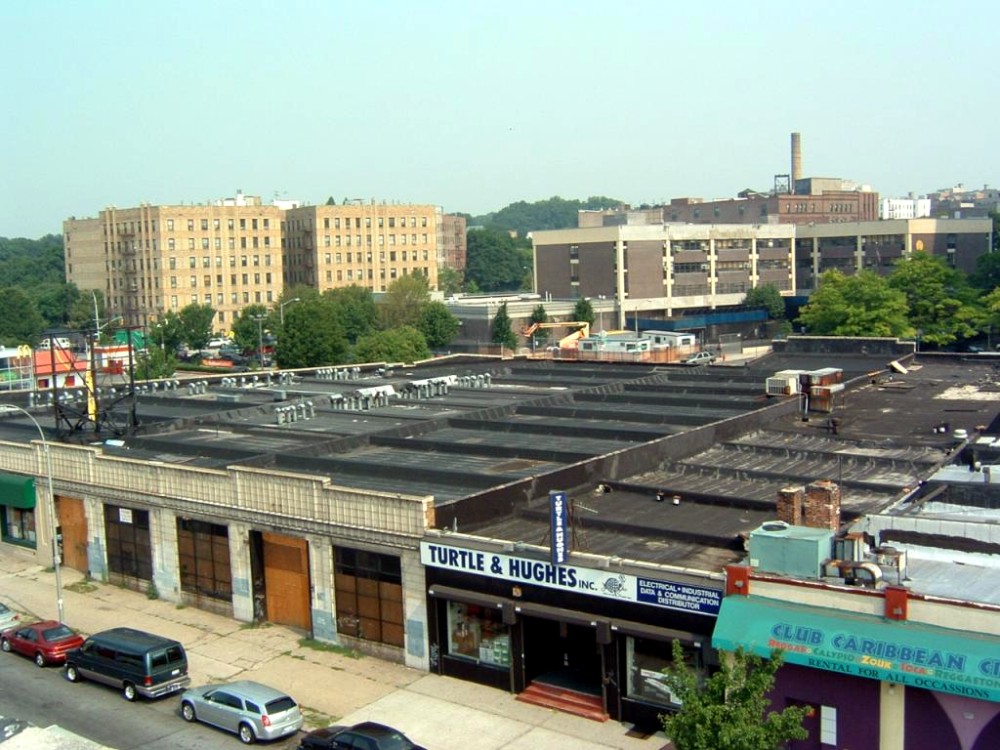
Photo by Eric Altschul for PropertyShark
The ballpark raised the value of the land around it as well. Charles Ebbet had purchased a large plot of land that had been shanties and scrub fields. The land near the ballpark would not stay cheap for very long, so smart developers grabbed it, realizing that its proximity to the ballpark could be lucrative.
So what to build? The original plans for Ebbets Field, as drawn up by Clarence R. VanBuskirk, originally included valet parking. Drivers would pull up into a special port-cochere next to the stadium, where they would receive a ticket and their car would be parked in a nearby garage.
After the game, they would sit in a comfortable, heated waiting room while someone fetched their automobile. It was all very posh and quite unsustainable. But baseball’s just not that kind of game.

Photo via Google Maps
An Enormous Garage on Empire
Quite a few massive, one-story garages went up in the area. 73-97 Empire Boulevard is one of the largest, and one of the few that retains some of its original period detail.
These large buildings were just large sheds designed to hold and shelter cars. Some of them also offered maintenance services.
For some reason, their architects chose a Gothic theme for the glazed terra cotta facades. Many of the auto showrooms on Bedford shared this Gothic tracery — perhaps the worship of the automobile had something to do with it.
Or perhaps it just looked bright and clean, the kind of place you’d feel confident would take care of your car.

Photo via Google Maps
Parking garages for Ebbets Field were built all around the stadium, but most of those that remain are the ones facing Empire Boulevard.
Since Ebbets Field was torn down, the uses of many of these buildings has changed in the last 50-some years.
Some remained garages and auto service stations, while others became business that needed ample warehouse storage. Some became widely known nightclub and dancehall spots, some became storefront churches, laundromats and supermarkets, and many more were torn down.
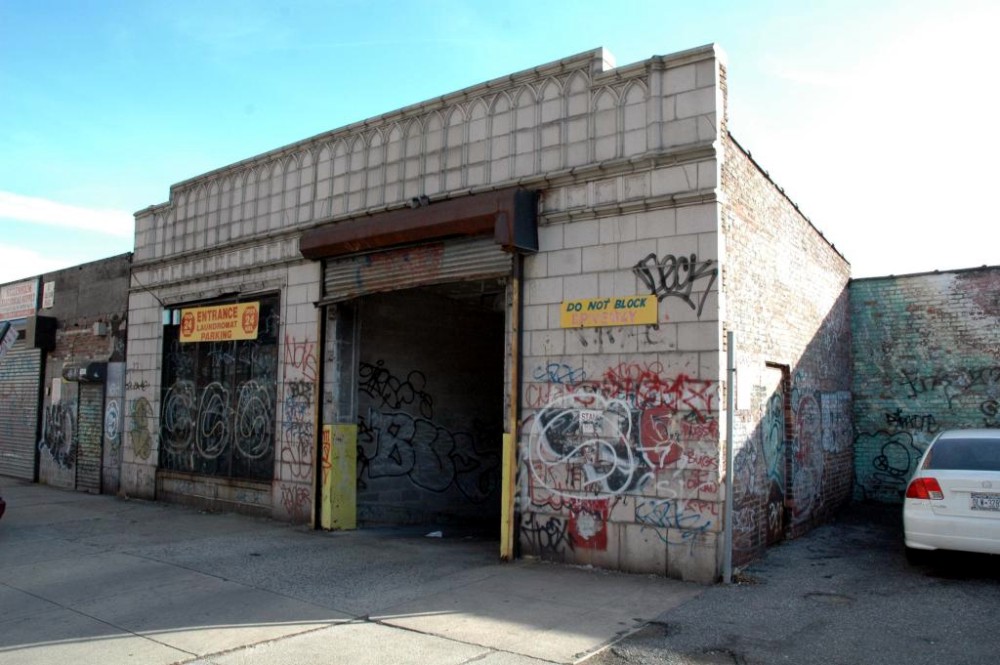
Rear of property; photo by Nick Strini for PropertyShark
This one won’t be around much longer, either, so take notice of the details while you can. A running band of glazed white terra cotta forms the streetside façade and cornice of this 128-by-200-foot building.
The pattern is a continuous series of Gothic arches, highlighted by slight variations in elevation, which accentuate the bays and entryways into the garage.
Is this great architecture? Not really. Should it be landmarked and protected? Unfortunately, that wouldn’t make a lot of sense. This area needs to be developed, and an enormous limited-use, one-story building is not the best use of space in a growing city.
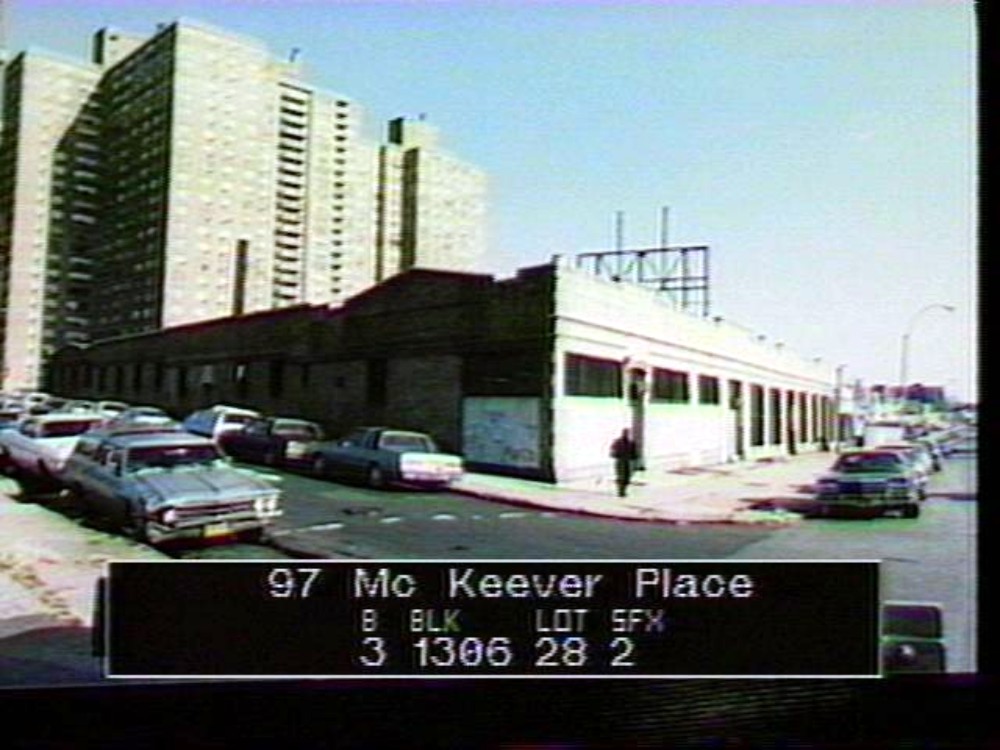
1980s tax photo via Municipal Archives
Ebbets Field is only a memory and a plaque on the wall of the Ebbets Field Apartments now. But these garages are still here, the last remnant of a bygone era.
It was a time when men wore suits and hats to a ballgame and parked their Packards, Studebakers and Overlands in this building. Soon, they will all be nothing but memories.
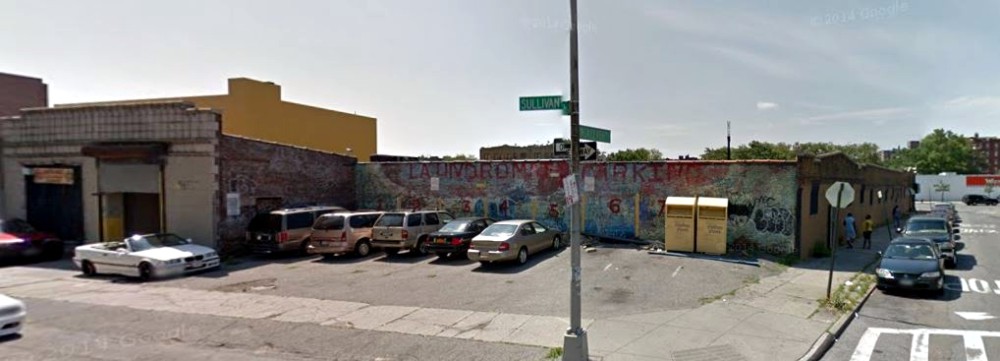
This and top photo via Google Maps
Related Stories
Walkabout: Brooklyn’s Amazing Automobile Industry, Pt 1
Past and Present: Ebbets Field, Crown Heights
Walkabout: The Architect, the Baseball Stadium, and a Really Bad Couple of Years, Part 3



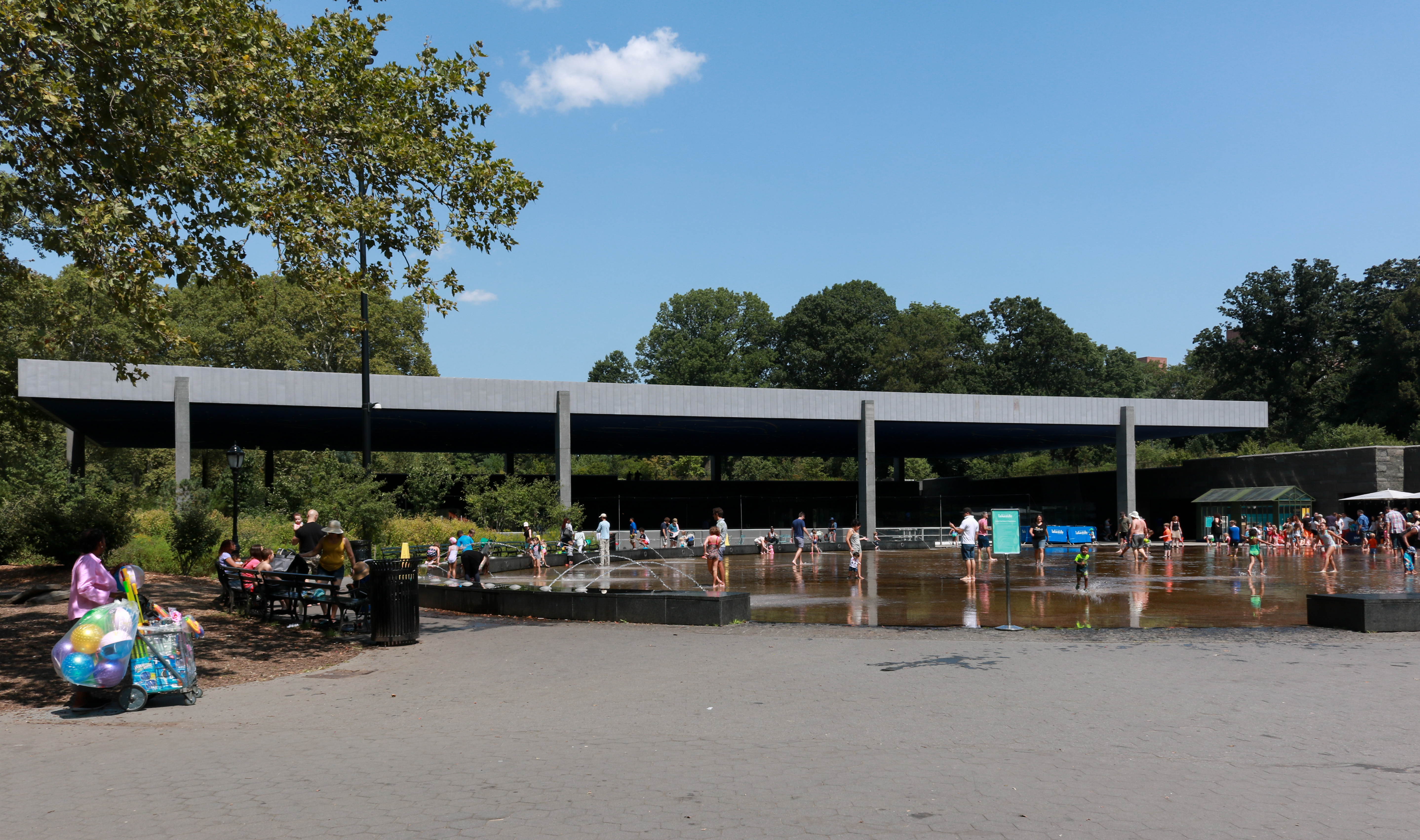
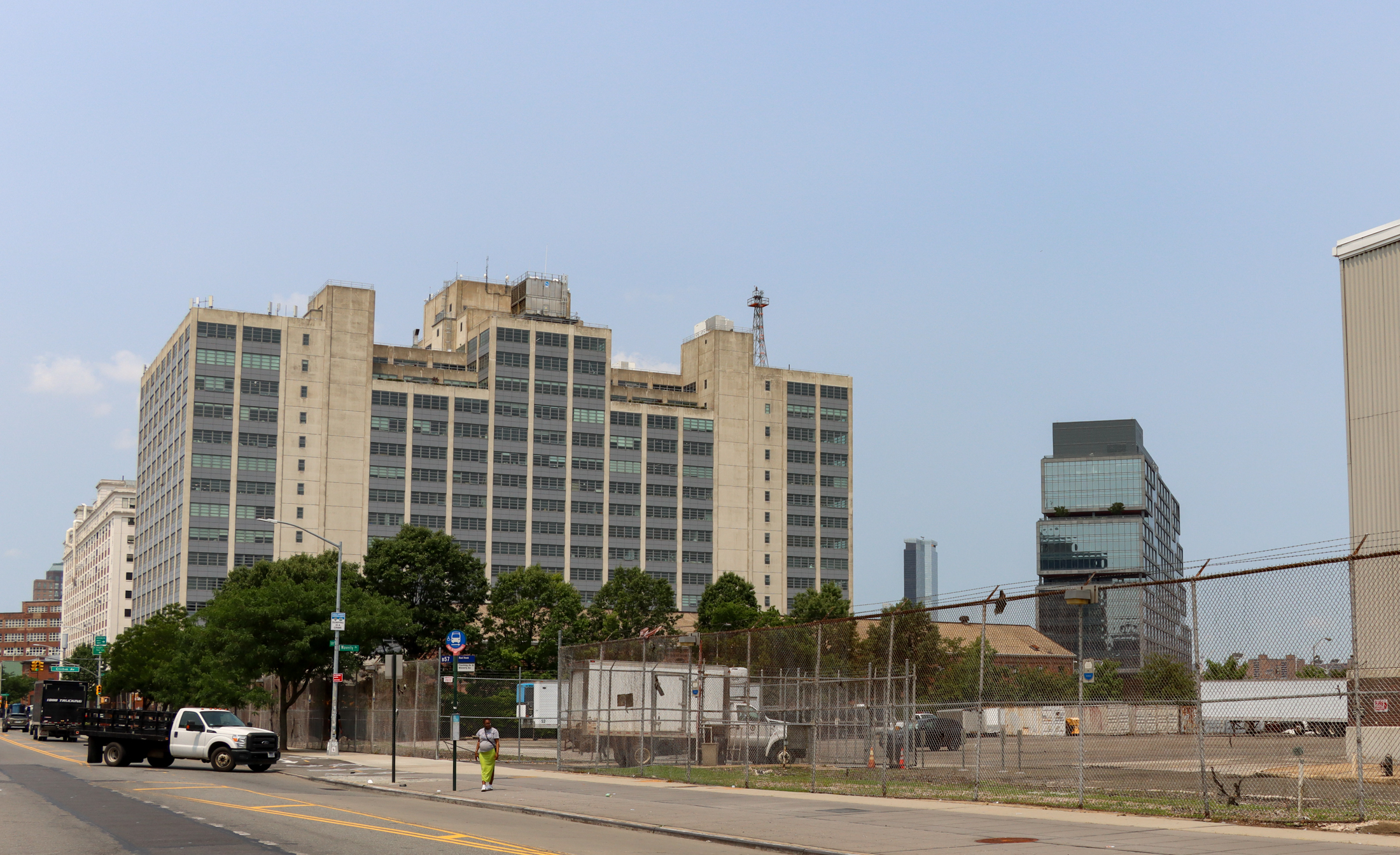
if only it could be redeveloped to be apartments for new yorkers and real retail space; but as things are now, it’s likely to become…more storage warehouses…..ugh